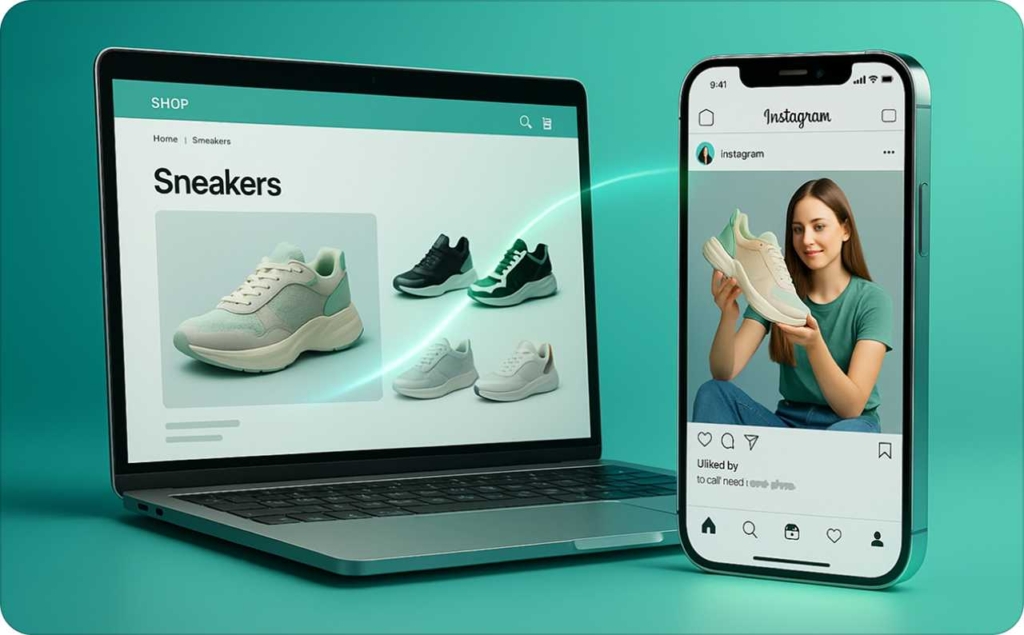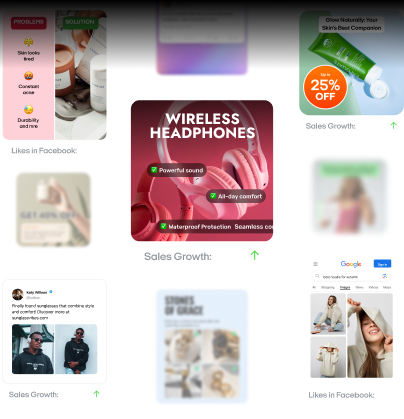11 ways to boost your Meta ads hook rate without spending more
Want to grab attention without raising your ad budget? Zeely AI shares 11 proven tactics to increase your Meta ads’ hook rate and drive better results for the same spend.
Ever wonder why some video ads stop people in their tracks while yours get skipped in seconds? It often comes down to a tiny window: those first three seconds, also known as hook rate.
When advertisers focus on improving hook rate, they usually see better engagement and stronger results. Did you know that raising hook rate above 30% can boost click-through rates by up to 25%? If you want to bring that kind of lift to your own campaigns, you’re in the right place.
Now that you know the potential, let’s dive into how you can make it happen. In this guide, you’ll learn how to set up hook rate tracking in Meta Ads Manager, across both Facebook and Instagram, and how to compare your numbers to industry benchmarks.
We’ll also explore practical tweaks that help viewers stick around, like quicker intros or bold text overlays. By combining these tactics, you’ll see how to optimize Facebook ads, Meta ads and turn short attention spans into real ad performance.
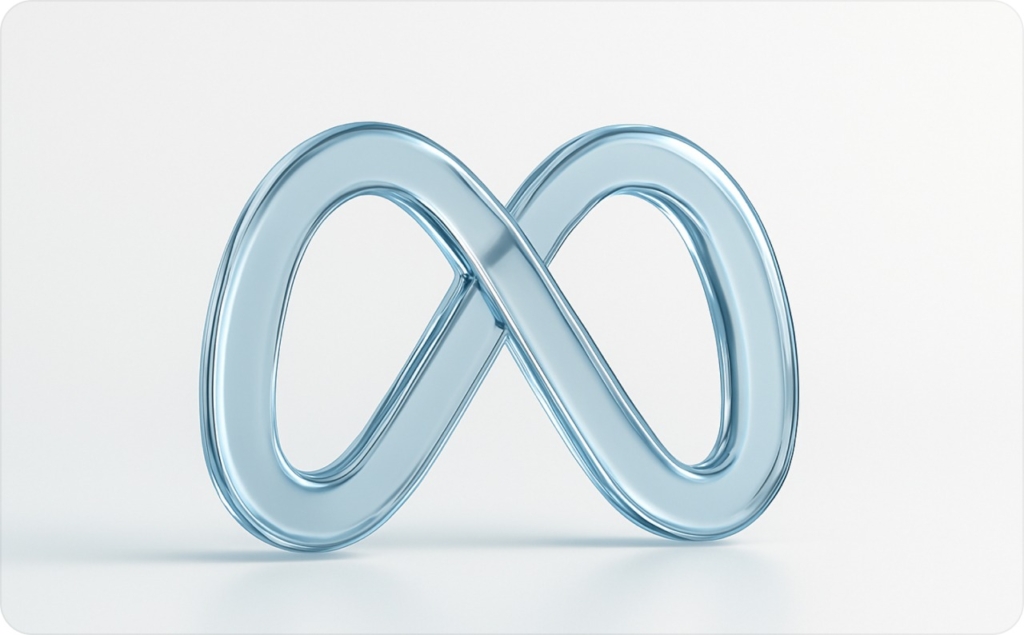
What is hook rate, and why it’s the first thing to fix in your Meta ads
Hook rate reveals how many users linger on your ad for at least three seconds, often called the “3-second view.” That’s your prime window to establish brand presence and spark curiosity. If you miss this chance, your impressions may be high, but meaningful engagement could slip away.
Think of hook rate as a thumb stop metric: Can your creative capture attention — even when someone’s swiping past at lightning speed? If not, it might be time for creative iteration, like introducing Facebook dynamic ads or a catchy opening line.
Many advertisers see immediate gains when they lift their hook rate. In one campaign, improving this early engagement indicator from 15% to 28% led to a 12% increase in conversion rate.
And while hook rate isn’t the only measure of success, metrics like view-through rate, CTR, and final conversions also matter, it’s the crucial first step in any video ad funnel.
A high hook rate doesn’t just boost initial views. It lays the groundwork for deeper audience interest and better ad spend optimization.
Most marketers focus on final conversions, yet the first three seconds can make or break your entire creative strategy. Nail this opening, and you’ll see a ripple effect on everything else — from brand recall to bottom-line results.
How a good hook rate helps you get more clicks and sales
When you capture viewers early, you often spark conversion improvement. In fact, ads with a hook rate of at least 25% tend to outperform lower-engagement ads in both click-through rates and end-of-funnel sales.
Top performers can even hit a 30–50% hook rate, signaling that their creative strategy is on point from the start.
Why Meta shows your ads more when they grab attention fast
According to The Verge, Meta’s platforms favor posts and ads that generate immediate engagement — likes, comments, or replies. Content that hooks viewers right away often gets an extra boost in the feed, translating into more organic reach and better paid efficiency.
How hook rate tells you where to spend smarter
A strong hook rate shows you exactly where your ad spend pays off the most. If viewers consistently watch beyond the first three seconds, your creative is connecting — and you can invest in it with confidence.
In a recent Meta analysis, campaigns reaching a 30–50% hook rate saw a 20% improvement in cost per lead. Early engagement also pinpoints which elements, like visuals or copy, need refining, so each dollar you spend drives more impact.
Test different intros or overlay text to see where viewers pause and where they drop off. By focusing on what truly hooks them, you’ll allocate your budget toward ads that consistently spark attention.
Do high hook rates really lead to more sales?
Some advertisers worry that high hook rates only reflect casual curiosity, not genuine buying intent. Yet creative testing across platforms often shows that when people are hooked early, conversions rise.
On Threads, for example, one brand swapped a plain opener for a playful sticker in the first seconds. Their hook rate jumped from 15% to 40%, leading to a 15% bump in sign-ups. So while a strong hook rate isn’t everything, it’s often the catalyst for deeper engagement.
What it all means for your business results
When your hook rate is solid, it sets the stage for better video ad performance across the board. It explains why early engagement often drives more meaningful actions, like clicks, sign-ups, or purchases, later in the funnel.
Think of hook rate as the foundation of your digital advertising strategy. If people don’t pause in those first few seconds, your entire message gets lost. But when that opener resonates, you’ll see stronger brand awareness and a healthier return on your ad spend — both now and down the road.

How to calculate and track hook rate in Meta ads
Now that you understand why hook rate matters, let’s walk through how to measure it inside Meta Ads Manager. Setting this up helps you see when people pause at that crucial three-second mark — and when they scroll past.
Here’s the formula you need to know
At its core, hook rate shows the percentage of viewers who stayed past three seconds. The formula is simple:
Hook Rate = (3-second video views ÷ total impressions) × 100
You can run this manually in a spreadsheet, but it’s much easier to track it in Meta Ads Manager for real-time insights and easier reporting.
How to set it up in Meta ads manager
Open your campaign dashboard, then click “Columns” and select “Customize Columns.” From there:
- Search for 3-second video views and add it
- Scroll down and click on Custom Metrics
- Name your new metric “Hook Rate (%)”
- Paste this into the formula box: (3-second video views / impressions) * 100
- Save the setup so it appears in your default view
That’s it — you’re now ready to track your hook rate alongside other performance metrics.
Why results look different on Facebook vs. Instagram
If you run ads on both Facebook and Instagram, make sure to filter your data by placement. Viewer behavior changes based on format.
For instance, Instagram Stories may need a louder opening scene, while feed ads on Facebook benefit more from strong headlines or motion.
These platform differences affect how users engage with your content and can change your hook rate significantly. Comparing results by platform helps you make data-driven decisions faster.
What to do when your hook rate is too low
Once added, you’ll see hook rate next to KPIs like CTR and Cost Per Result. A low hook rate may mean your ad’s opening isn’t effective.
Swap out the first scene, rewrite the opening line, or test another thumbnail. If the hook rate improves, your content is clearly grabbing attention early.
Remember: you’re not just tracking a vanity metric — you’re learning how to optimize video ad performance where it matters most.
What happens after you set it up
Now that your hook rate is visible and trackable, you’ll be better equipped to scale winning creatives and pause the ones that miss.
What’s a “good” hook rate — and what’s not
You’ve set up hook rate tracking in Meta Ads Manager, but how do you know if your numbers are actually good? Many advertisers use 25% as a baseline: if one out of four viewers sticks around for three seconds, that’s decent.
Some brands reach 30–50% or higher, indicating their creative truly grabs attention early on. Anything below 20% often means you need to refine your ad or review your targeting strategy.
Use this table to see where you stand:
| Hook rate (%) | Performance tier | Interpretation | Suggested action |
| < 20% | Underperforming | Weak hook; needs creative or targeting adjustment | Rewrite intro, test stronger visuals |
| 20–29% | Average | Decent attention, room for optimization | A/B test intros and visuals |
| 30–49% | Strong Performer | Good attention retention; campaign likely healthy | Scale high-performers, refine CTA |
| 50%+ | Top 1% Benchmark | Excellent engagement; creative is resonating strongly | Repurpose across placements |
Trends that show what’s working right now
Benchmarks shift by sector, but new ad formats can also tip the scales. According to TechCrunch, augmented reality ads achieved an 87% incremental ad recall in the 18–24 demographic on Meta platforms.
This shows how an interactive opening, essentially a strong hook, can spark early engagement at scale. Even if AR isn’t in your immediate plans, it’s proof that the right creative approach can boost viewer retention.
Other metrics that help you understand your hook rate
Keep an eye on video played to to identify where audience drop-offs occur. If you see a sharp decline after the three-second mark, your hook likely needs work. Meanwhile, View Rate — views divided by impressions — tells you how effectively your opening frame catches attention.
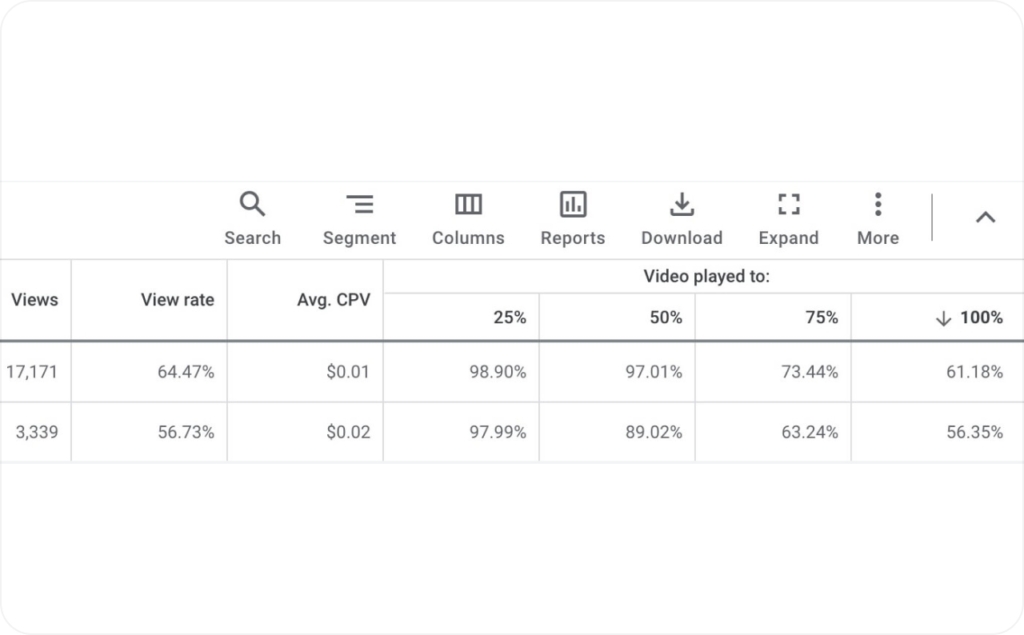
Photo source: Social Media Examiner
Beyond those, CTR gauges what happens once your hook succeeds, while CPV reveals how efficiently you’re holding attention. A low CPV usually indicates a more compelling start.
How to compare your numbers the right way
Consider how your hook rate compares to industry averages and whether it aligns with viewer retention data at key checkpoints. Also evaluate how each placement, like Reels, Stories, or the Facebook feed, affects your hook rate, since user behavior can vary widely.
A short video might thrive on Reels, but you may need stronger text overlays or dynamic visuals for feed ads.
Finally, track Traffic Behavior Flow in tools like Google Analytics to see if a strong hook leads to deeper site engagement.
11 easy ways to get more people to watch your ads
A hook rate below 20% often means your first few seconds aren’t capturing attention, leaving potential conversions on the table. Aim for at least 25–30% and keep refining your approach.
These creative strategies will help you craft better openings, reduce creative fatigue, and maintain viewer interest for the long haul.
1. Start strong with a scroll-stopping intro
A vibrant freeze-frame, contrasting text, or dramatic product shot can instantly raise your hook rate. When people see something intriguing right away, they’re more likely to stick around and learn more.
2. Align content with Meta’s algorithms
Meta frequently updates its platform signals, rewarding short, privacy-friendly ad creatives that hold viewers’ attention. By tailoring your intros to what the platform favors, you give your ads a better shot at feed priority.
3. Segment campaigns by goals
Hooks work best when they reflect specific objectives. An opener that says, “Still deciding?” grabs the attention of retargeting audiences, while a dynamic brand reveal might be perfect for broader awareness campaigns.
4. Leverage TikTok-inspired trends
Quick cuts, catchy audio, and playful transitions can thrive on Reels and Stories, where viewers expect rapid-fire content. By adapting popular TikTok cues, you can boost video engagement and improve your hook rate across Meta platforms.
5. Experiment with green screen and split screen
Placing yourself in front of key imagery (Green screen) or demonstrating a before-and-after (Split screen) pulls people in right away. Curiosity keeps them watching beyond the three-second mark.
6. Combine pixel and conversions API
Using both tools through Meta’s Events Manager closes data gaps and pinpoints exactly where viewers drop off. With detailed insights, you can refine those early moments to lift your hook rate and overall video performance.
7. Show people and emotions
A smile, a look of surprise, or a heartfelt reaction can be irresistible in an ad’s opening frame. Emotional resonance often leads to higher engagement, giving you a stronger start.
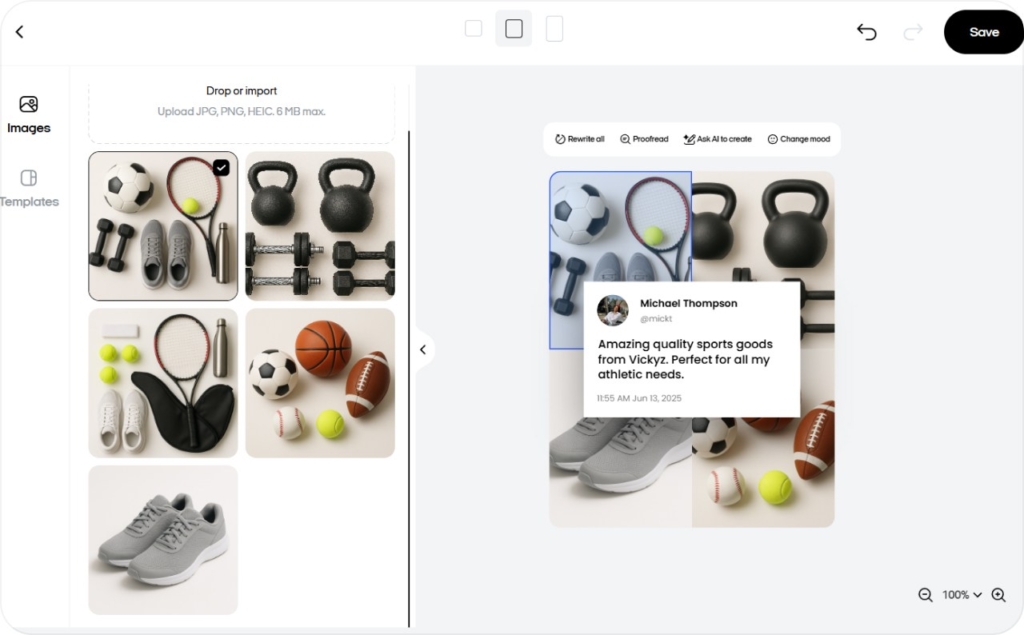
8. A/B test your opening seconds
Compare two versions of your first three seconds, like a playful animation vs. a direct product reveal. Run each variant long enough to reach statistical significance, so you know which format truly boosts your hook rate.
9. Use interactive AR ads
Interactive AR ads can drive up to 87% incremental ad recall in some demographics, showing how hands-on experiences capture early interest. If AR isn’t an option, try polls or mini-quizzes — anything that makes viewers linger.
10. Keep optimizing and rotating creatives
Even the best hooks can fade over time. By rotating elements or exploring new placements like AR Reels, you stay ahead of evolving audience preferences, reducing creative fatigue and maintaining a healthy hook rate.
11. Capture attention with audio hooks
Many users watch Reels or Stories with the sound on. A catchy opener — whether it’s a trending song or a spoken question — can pique curiosity before viewers decide to scroll away.
Use these tools to track hook rate like a pro
Start with Facebook Ads Manager. It tracks impressions, clicks, CTR, and video engagement, giving you a direct read on how well your hook performs.
To go deeper, connect Google Analytics using UTMs or synced events to track user behavior after exposure. For example, check if viewers who watched beyond three seconds clicked through or bounced off your landing page.
Use custom dashboards or Google Ads’ reporting tools to build real-time visualizations, segmenting data by campaign, audience, or device. Tools with video retention analytics help break down performance by age, platform, and content type — showing you where attention drops off and why.
Let AI tools like Zeely help you build great hooks faster
If you want a faster, AI-powered way to create high-performing hooks, Zeely AI is a powerful option. It helps generate ad scripts using proven, tested formats that are optimized for engagement.
You can build scroll-stopping ads without needing to start from scratch — plus, Zeely tracks your social media ads performance across platforms so you can see what’s working in real time.
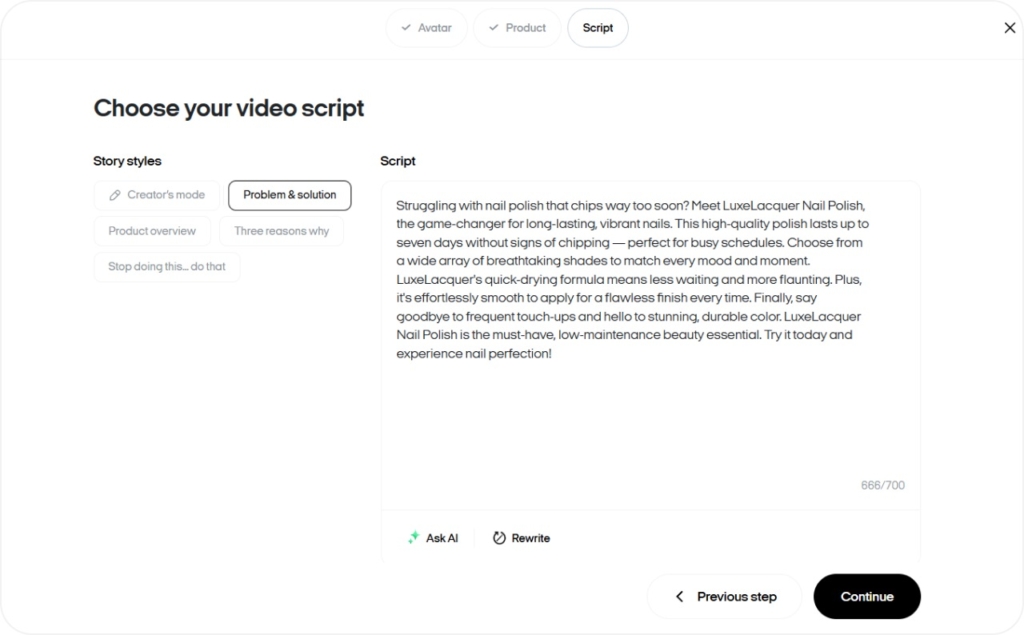
Avoid these hook rate mistakes that cost you views
Even with the right tools and tactics, many marketers still run into issues when trying to improve their hook rate in Meta Ads. Add shifting factors like privacy regulations and declining organic reach, and you’ll see why creative testing is more important than ever. Here are the most common mistakes — and how to avoid them.
Mistake #1: Overlooking performance data and privacy constraints
Changes like GDPR, CCPA, and iOS tracking opt-in have reduced data precision, making it crucial to test your hooks on broad audiences. Many marketers guess what went wrong instead of reviewing data insights.
Leverage tools such as Facebook Ads Manager or Google Analytics to see exactly where viewers drop off. Often, just improving the first five seconds can sustain your audience past the hook moment.
With less granular data available, consistent A/B testing and creative iteration help pinpoint which intros resonate best across devices and demographics.
Mistake #2: Using the same creative approach too Long
Keeping the same style or format across multiple campaigns leads to creative fatigue. Try mixing testimonial videos, animated product demos, or comedic narratives. Refresh your hooks every few weeks to maintain audience retention and prevent staleness.
Mistake #3: Overcomplicating the message
Adding too many elements at once confuses viewers. In a low-attention environment, your first three seconds need to be crystal-clear about the problem you solve.
Simple, direct content works best — especially when your data is already less precise due to privacy rules. If watchers don’t grasp your message right away, they’ll scroll on.
By understanding and correcting these common hook rate mistakes, you’ll steer clear of wasted spend and stagnant metrics. Keep testing your ad openings, analyze viewing drop-off points, and adapt to privacy changes with data-driven optimization.
Your next steps to improve hook rate starting today
You’ve now seen how hook rate can transform the effectiveness of your Meta Ads, from capturing attention in the first three seconds to maximizing conversions.
To recap, start strong with a clear, concise opening, iterate on your creative hooks with data-driven optimization, and watch for audience drop-off points that might indicate a weak opener.
Consistency is key — keep testing new styles, monitoring performance metrics, and refining your approach as privacy regulations and platform algorithms evolve.
Continuous strategic planning will help you stay ahead of privacy changes, organic reach declines, and shifting audience expectations.
Whether you’re using AI-powered solutions such as Zeely or manually tweaking your creatives, your ultimate goal should be to engage and retain viewers from the very first frame.
Armed with these actionable insights, you’ll be able to plan your next steps and maintain a strong, consistent hook rate across all your Meta Ads campaigns.
Also recommended
